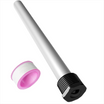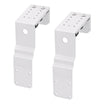Essential Autumn Maintenance Tips for RV Air Conditioners

Preparing Your RV Air Conditioner for Autumn
A. Cleaning and Maintenance Tips
1. Ensuring Proper Airflow and Ventilation: Check the air vents, ducts, and grilles for any obstructions, such as leaves or debris. Clearing these obstructions will maintain proper airflow and ventilation.
2. Cleaning the Filters and Coils: Regularly clean or replace the air filters to prevent dust and debris from clogging the system. Additionally, clean the condenser coils to optimize the cooling efficiency of your RV roof air conditioner.
B. Inspecting and Repairing
1. Checking for any Damages or Leaks: Inspect the exterior and interior components of your RV air conditioner for any visible damages or signs of leaks. Repair or replace any damaged parts promptly to prevent further deterioration.
2. Repairing or Replacing Faulty Components: Ensure all electrical connections are secure and functioning properly. If you notice any faulty components, consult a professional technician for repair or replacement.

Optimizing Performance in Autumn
A. Adjusting Temperature Settings
1. Optimal Temperature Range for Autumn Season: Set your RV air conditioner to a comfortable and energy-efficient temperature range, typically between 70-75°F (21-24°C), during the autumn season.
2. Energy-Saving Tips for Comfortable Cooling: Consider utilizing ceiling fans or portable fans to help circulate cool air and reduce the load on your RV air conditioner. This can result in energy savings and increased comfort.
B. Using Thermostat and Fan Settings
1. Understanding Thermostat Features and Programming: Familiarize yourself with the thermostat settings of your RV roof air conditioners. Take advantage of programming options to regulate temperatures and save energy.
2. Utilizing Fan Settings for Improved Airflow: Use the "auto" or "circulate" fan mode to ensure optimal airflow throughout your RV. This setting can help distribute cool air evenly and maintain a comfortable atmosphere.

Weatherproofing Your RV Air Conditioner
A. Sealing and Insulating
1. Inspecting and Sealing Any Gaps or Cracks: Carefully examine the area around your rooftop RV air conditioner for gaps or cracks that could allow warm air to leak in or cool air to escape. Seal any gaps using weatherstrips or caulk.
2. Installing Insulation Materials for Efficiency: Consider adding insulation to your RV's ceiling, walls, and floor to minimize heat transfer. Insulation materials such as foam or reflective panels can significantly improve the efficiency of your air conditioner.
B. Protecting from Debris and Elements
1. Using Covers or Guards to Shield the Air Conditioner: Invest in a quality RV air conditioner cover or guard to protect your unit from falling leaves, branches, and other debris. This will prevent potential blockage or damage to the condenser unit.
2. Cleaning and Maintaining the Exterior of the Unit: Regularly clean the exterior of your RV air conditioner to remove dirt, dust, and grime. This will contribute to efficient operation and prolong the lifespan of the unit.
Off-Season Storage Tips
A. Cleaning and Securing
1. Properly Cleaning the Air Conditioner before Storage: Thoroughly clean the RV roof air conditioner before storing it for the off-season. Remove any accumulated dirt and debris to prevent mold and mildew growth.
2. Safely Securing the Unit to Prevent Damage: Secure the unit with straps or covers to protect it from harsh weather conditions, pests, and potential damage during storage.
B. Regular Inspection during Storage
1. Checking for Any Signs of Deterioration or Pests: Periodically inspect your RV air conditioner while in storage for signs of deterioration, pests, or any other issues. Address any problems promptly to avoid complications in the future.
2. Maintaining a Storage Checklist for Future Use: Keep a checklist to remind yourself of the tasks necessary before and after storing your RV air conditioner. This will ensure you complete all necessary steps for optimal performance.
Frequently Asked Questions (FAQ)
Q: How often should I clean my RV air conditioner's filters?
A: It is recommended to clean or replace your RV air conditioner's filters every 1-3 months, depending on usage and environmental conditions. Regular maintenance helps ensure optimal airflow and cooling efficiency.
Q: How can I improve the energy efficiency of my RV air conditioner in autumn?
A: To improve energy efficiency, consider using ceiling fans or portable fans to help circulate cool air and reduce the load on your RV air conditioner. Additionally, maintaining proper insulation and sealing any gaps can help minimize heat transfer and optimize efficiency.
Q: Should I consult a professional for RV air conditioner repairs or maintenance?
A: It is advisable to consult a professional technician for any complex repairs or maintenance requirements of your RV air conditioner. They have the expertise and tools to handle the job effectively and ensure your unit performs optimally.



























